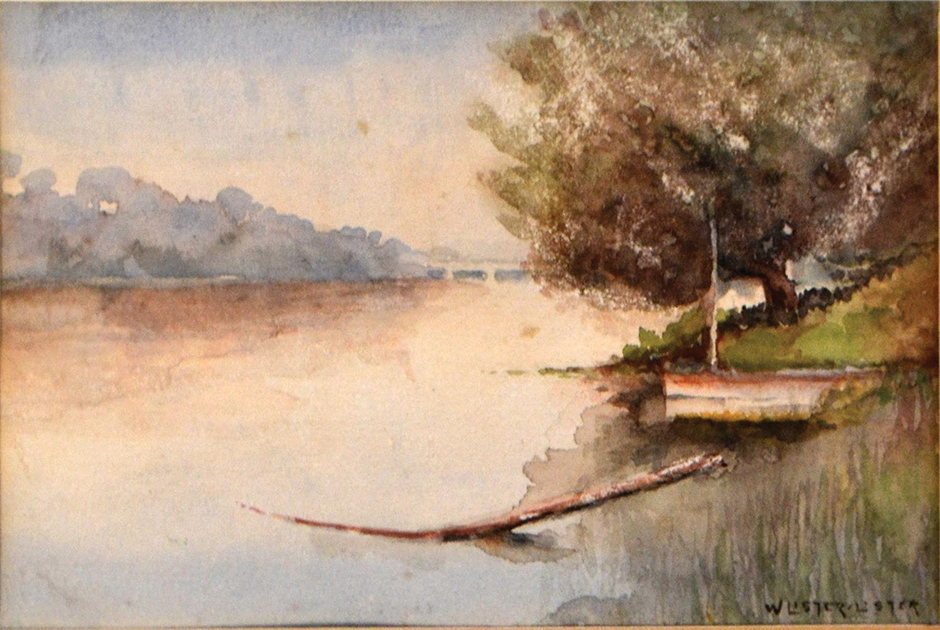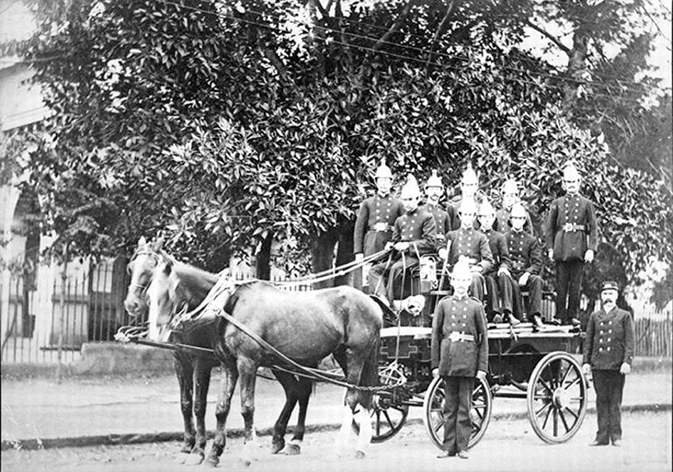IN January 1907 Arthur Judges held a magisterial enquiry touching on the death of a young married man named Ernest Anderson, a half-brother of Joseph Hayes of Penrith. Ernest was on a visit at the time the fatality occurred just below the Nepean River Bridge. Alick McLennan stated that he was a farm labourer, 16 years of age and living in Penrith when about 9 a.m. he was at the river when Albert Hayes, O’Brien and Ernest Anderson came for a swim. He was on the bank near the willows and saw Hayes, Ernest and a boy named Bailey undress and go into the water. Hayes and Ernest swam out towards the middle of the river when he heard Ernest call out “Come here quick, I’m done”. Hayes swam immediately to Ernest who was struggling towards him and Ernest caught hold of Hayes and pulled him partly under the water and Hayes called out “Help, help”. Being undressed Alick jumped into the water and tried to help by getting behind Ernest and pushing him towards the bank. Hayes became exhausted due to Ernest having caught hold of him for so long and being partly knocked under once or twice, then Ernest sank under the water and Hayes put his hand under him and got him a little nearer to the bank but Ernest went down suddenly and did not reappear. The spot where Ermest sank was deep water about 12ft from the bank and there was no help from three or four others who were on the bank and undressed at the time even though they knew that Ernest was in danger. Next Albert Hayes stated that he was a labourer and lived in Penrith. Ernest went with him to the Nepean River for a swim. He undressed and went in first, quickly followed by Ernest who could swim fairly well and Ernest swam out to a log about 10 yards from the bank where he was resting. Ernest said that there are enough weeds here to drown a man and then he started to swim across the river. He kept alongside of him but when about 40 or 50 yards from the bank Ernest turned around to come back. When he had covered about four- or five-yards Ernest said, “Catch hold of me Bert, I’m done.” He caught hold of him and Ernest clasped him around the neck and pulled him under and he called out to the people on the bank to come and give him a hand. Alick McLennan was the only one who responded and between the two of us we got Ernest to within 15 yards of the bank when he sank. He had hold of Ernest’s hand when he sank, his hand was under Ernest’s arm but he could not keep his hold as he was exhausted and with difficulty he reached the log to rest. He said he called to those people on the bank to run to Bennett’s for help and some of them went and brought only a boat. He asked someone to go again and see if the grappling irons were available and Mr Bennett brought them back and sent a messenger for the doctor. Within 10 minutes from the time that Ernest sank and after making three attempts with the grapplers Mr Bennett brought the body to the surface. If those on the bank (two of whom were undressed) had come to the assistance of Ernest he might have been rescued. Dr Higgins arrived on the scene within two or three minutes of the body being taken out of the water and made every attempt to bring Earnest around and keeping up the efforts for an hour or more, after then he pronounced life to be extinct. Senior-Sergeant Peterswald was present and took charge of the body that was conveyed to the Nepean Cottage Hospital Morgue. Joseph Hayes stated he is a railway guard and lives in Penrith and having view Ernest’s body he recognise it was Ernest Anderson his half-brother. Ernest came to his place on Saturday night on a visit as his wife had been staying with them for some time. On Sunday morning between 8 and 9 Ernest asked him if he would go for a swim with him but he said ‘No,’ and he didn’t see him after that, but sometime later information was brought to him that Ernest drowned in the river and he immediately went down there and saw his body on the bank and assisted to try and restore animation but he knew nothing of the circumstances of the drowning other than what he have heard. He said that Ernest was 23 years of age, born in Sydney, a married man with one child but he had no property and he was not insured. He did not know whether Ernest could swim or not but he knew that his son Albert was with Ernest and could swim well. Dr Higgins stated that he was a Government Medical Officer and about a quarter to 10 am he was informed that a man named Anderson had drowned at the Willows and he went to the river and saw the deceased lying on the bank and that efforts were made to restore life. They up-ended him and he pressed a large quantity of food and water from Ernest’s stomach and he carried out artificial respiration and opened a vein in the forearm and continued the efforts for about an hour, then rigor mortis set in. The finding of the coroner was that Ernest Anderson died from asphyxia caused by drowning and was accidental. The coroner commended the praiseworthy conduct of Hayes and McLennan who had both acted with conspicuous bravery whilst the conduct of those standing on the bank with the drowning taking place before their eyes. The painting is believed to be “The Willows at Nepean River” painted by William Lister-Lister.
Sources: Nepean Times, Saturday 19 January 1907, page 2, Internet Auctions.






